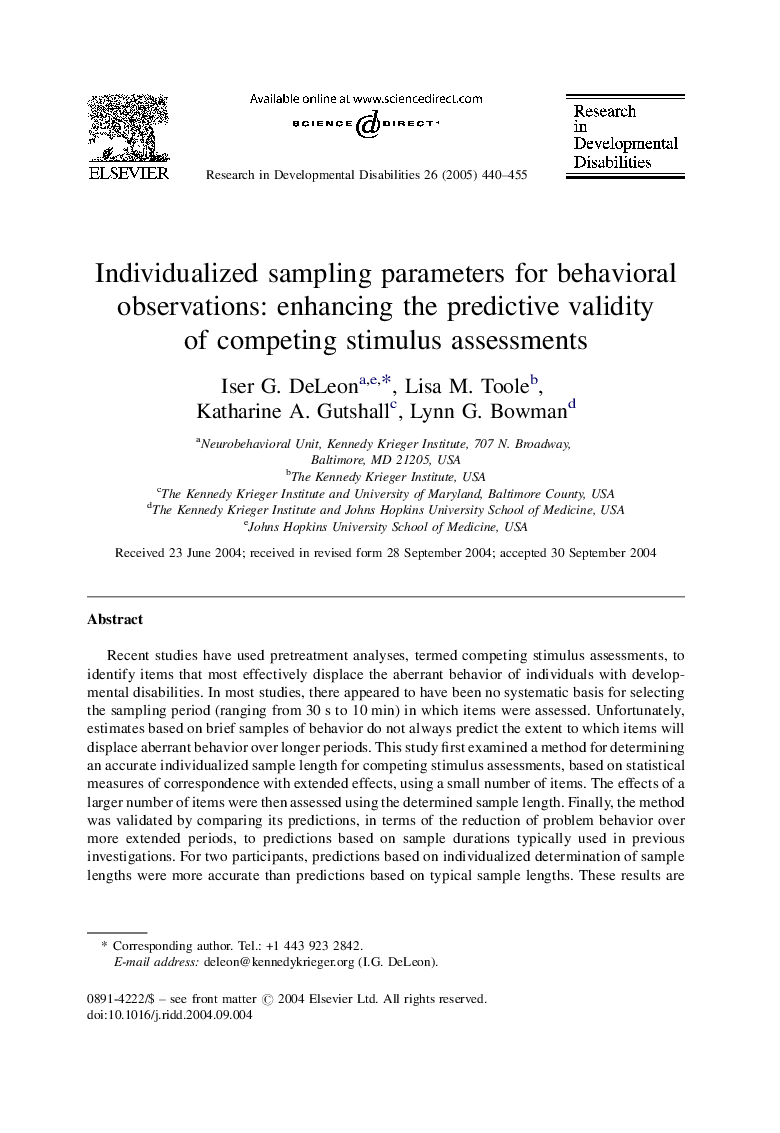| Article ID | Journal | Published Year | Pages | File Type |
|---|---|---|---|---|
| 10318606 | Research in Developmental Disabilities | 2005 | 16 Pages |
Abstract
Recent studies have used pretreatment analyses, termed competing stimulus assessments, to identify items that most effectively displace the aberrant behavior of individuals with developmental disabilities. In most studies, there appeared to have been no systematic basis for selecting the sampling period (ranging from 30Â s to 10Â min) in which items were assessed. Unfortunately, estimates based on brief samples of behavior do not always predict the extent to which items will displace aberrant behavior over longer periods. This study first examined a method for determining an accurate individualized sample length for competing stimulus assessments, based on statistical measures of correspondence with extended effects, using a small number of items. The effects of a larger number of items were then assessed using the determined sample length. Finally, the method was validated by comparing its predictions, in terms of the reduction of problem behavior over more extended periods, to predictions based on sample durations typically used in previous investigations. For two participants, predictions based on individualized determination of sample lengths were more accurate than predictions based on typical sample lengths. These results are discussed in terms of the exchange between expediency and accuracy during competing stimulus assessments.
Keywords
Related Topics
Life Sciences
Neuroscience
Behavioral Neuroscience
Authors
Iser G. DeLeon, Lisa M. Toole, Katharine A. Gutshall, Lynn G. Bowman,
